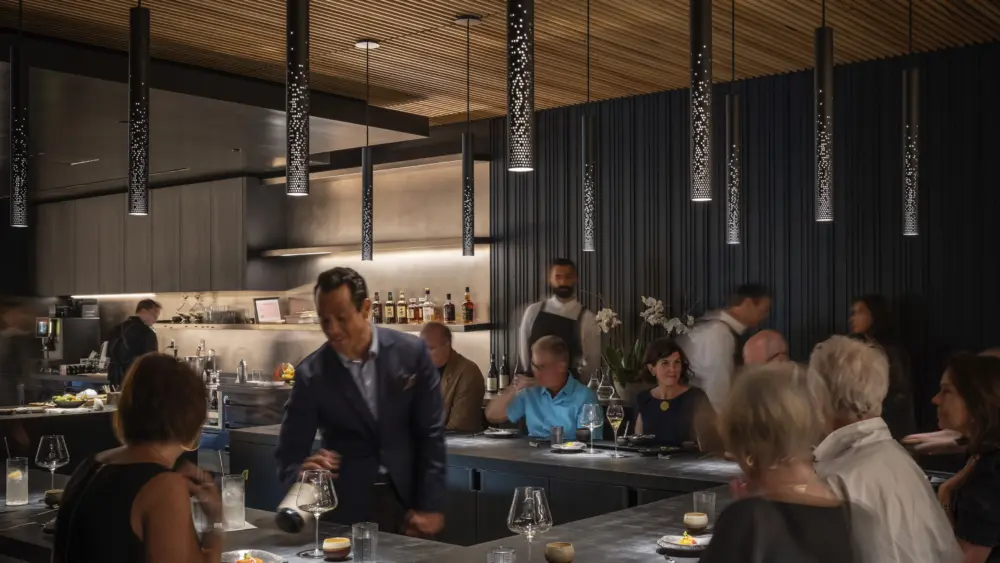As is our habit, this Wine/Harvest Fair issue is filled with fun, facts, figures and fancy.
Welcome to the annual Wine/Harvest Fair issue of NorthBay biz magazine. This special issue is one of our favorites. That’s probably not too surprising, as it’s a sentiment that’s long been echoed by both our readers and advertisers. This is the 17th year that NorthBay biz has been the official print publication of the Sonoma County Harvest Fair. Here, you’ll find the 2015 Harvest Fair schedule and guide of events to help you navigate your way around the fun. If you’ve never attended or haven’t gone in a while, make sure to attend this year. It’s a guaranteed good time.
As is our habit, this Wine/Harvest Fair issue is filled with fun, facts, figures and fancy. Beginning with the cover story on the emergence of Rosé and continuing through a romp in the fields with Vineyard Vignettes and reviews of outstanding wineries in Great Tastes, you’ll be informed while being entertained. Taken together, this issue explores both the lighter and more serious sides of growing grapes and making world-class wines right here in our own backyard. So sit back, relax, pour yourself a glass of your favorite local wine and have a read. Then go out and enjoy the Sonoma County Harvest Fair.
Given that this issue is dedicated to all things wine, I thought it appropriate to share some random facts on the subject. In my younger days, I remember enjoying delicious meals prepared from scratch by my Italian aunts—every meal a masterpiece. Recently, as I was recalling those days, I thought, “How did they manage to never serve a disappointing meal?” Then I remembered a secret one of my aunts shared: She always cooked her meals with wine. Thinking back now, I believe that sometimes she even put some in the food.
Wine facts and trivia
• There are approximately 10,000 different varieties of winegrapes grown around the world. (Who knew?)
• The country of Turkey has almost twice as much acreage set aside for winegrapes as United States.
• There are about 400 species of oak, though only 20 are used in making wine barrels.
• The average age of a French oak tree used in wine barrels is 170 years.
• Thomas Jefferson’s salary was $25,000 per year. In 1801, Jefferson spent $6,500 for provisions and groceries, $2,700 for servants and $3,000 for wine.
• The Napa Valley crop described in 1889 newspapers as the finest of its kind in the United States was…hops.
• The shallow Champagne glass originated with Marie Antoinette. It was first formed from wax molds made of her breasts.
• During World War II, a group of Alpine soldiers who were stranded in mountain snows survived for a month on nothing but a cask of Sherry.
• It’s impossible to create a beverage of more than 18 percent alcohol by fermentation alone.
• White wine gets darker as it ages while red wine gets lighter.
• The pressure in a bottle of Champagne is about 90 pounds per square inch. That’s about three times the pressure in automobile tires.
• The soil of one famous vineyard in France is considered so precious that vineyard workers are required to scrape it from their shoes before they leave each night.
As a follow-up to that last little fact, here’s an interesting way to look at how much wine can be made, on average, from one acre of grapes:
75 grapes = 1 cluster
1 grape cluster = 1 glass
4 clusters = 1 bottle
40 clusters = 10 bottles = 1 vine
30 vines =1,200 clusters = 1 barrel
1 barrel = 60 gallons
60 gallons = 25 cases
400 vines = 1 acre
1 acre = 5 tons
5 tons = 332 cases
How big can a wine bottle get?
If you’re like me, even though you’ve heard the terms many times, you really don’t know the difference about large-format bottles of wine. That all changes with the list below, as now you’ll wow your wine tasting buddies as you explain why you want them to gift you with a Salamanzar and not a Jerobaum.
Capacity (liters) followed by the number of standard wine bottles contained:
Standard (.75) 1
Magnum (1.5) 2
Jerobaum (3) 4
Rehobaum (4.5) 6
Methuselah (6) 8
Salamanazar (9) 12
Balthazar (12) 16
Nebuchadnezzar (15) 20
Let’s close with this wine- and spirit-related fact, more in keeping with the normal tone of this column: It’s estimated that the federal government takes in 14 times more in taxes on distilled spirits than producers of the products earn making them. That doesn’t include what states and localities additionally take in taxes on the same products.
That’s it for now. Enjoy this special issue of NorthBay biz.



